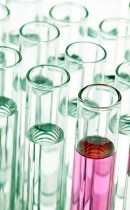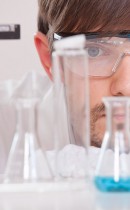Most employers are familiar with pre-employment drug testing as a standard hiring procedure, but employee screening may extend further depending on the position and industry requirements. When building an implementing a drug testing program, employers must take several things into consideration, including state laws to protect their company while abiding by industry requirements. Since there are many different options to choose from when creating a drug testing program, it’s important to understand the types of testing and the methodologies used to carry them out.
Hair Testing
What is hair testing?
Hair testing is one of the common drug testing methodologies that is typically used for pre-employment and random drug testing policies but can be an option for other types of drug testing as well. Hair tests is often used with another drug testing methodology.
How is it conducted?
When a donor is called on for a hair test, an indiscriminate sample of hair is collected under direct supervision. The hair is typically collected from the head, but can be sourced from other areas of the body, such as the arms, legs, armpits, etc.
What are the benefits?
- Wider detection window (up to 90 days)
- Best indicator of repeat drug use
- Eliminates the donor from refraining from drug use days before testing to avoid a positive test
- Conducted under direct supervision
- Screens for marijuana, cocaine, amphetamines, methamphetamines, PCP, opiates, etc.
Urinalysis
What is a urinalysis?
A urine test, or urinalysis, is the most common type of drug tests and can be used for pre-employment, random, or post-accident testing. Currently, it’s the only type of drug testing approved for federally-mandated DOT testing, which is important for employers who test for safety-sensitive and/or industry-specific positions. A urinalysis works by revealing the presence of a drug in a person’s urine through their metabolites, which is drug residue that remains in the body even after the effects of the drug have subsided.
How is it conducted?
The donor will select a sealed drug test sample cup and provide a urine sample. Their belongings will be placed in a secure location before providing a sample to prevent the donor from attempting to cheat. Once the sample is provided, the cup will be properly labeled, signed by the donor, and sent off to the lab for test results. Once results are complete they will be sent to the Medical Review Officer (MRO) to review.
What are the benefits?
- Detects recent drug use in past several days
- Most legally acceptable form of drug testing
- Less invasive for donor
- Screens for marijuana, cocaine, amphetamines, methamphetamines, PCP, opiates, etc.
Oral Fluid Testing
What is oral fluid testing?
An oral fluid test, also known as a mouth swab test or saliva test, collects a sample of saliva from the inside of the donor’s mouth. This type of testing is most efficient and ideal for catching recent drug use as the detection window ranges from a few minutes to 48 hours. It’s also easy to combine oral fluid testing in addition to another type of testing, such as urine or hair, that features a longer detection window for a more comprehensive drug testing solution.
How is it conducted?
A swab of the donor’s inner cheek will be collected, which will then be sent off to the lab for screening. This test can easily be done on-site with an FDA approved swab. If a donor has used recently this test will detect it within their saliva, unlike a urinalysis which depends on metabolites that take time to pass through the donor’s system and appear in their urine.
What are the benefits?
- Detects extremely recent drug use (from a few minutes to 48 hours)
- Hard to cheat
- Observed collection
- Reduces donor difficulties, such as shy bladder or sample tampering
- Less expensive
What Can Isha Diagnostics Do?
Isha Diagnostics’ drug testing services combine innovative technology with industry experts to help employers create custom drug testing solutions to make informed staffing decisions. Our experts can help you create a drug testing program that meets the needs of your company that are custom to your industry requirements, as well as state laws and job specifications. Isha Diagnostics' drug testing solutions include:
- Pre-employment screening
- Random drug testing
- Post-accident/reasonable suspicion
- Return-to-Duty (RTD)
In addition, Isha Diagnostics offers reasonable suspicion training to help detect and address signs of substance abuse in the workplace. To further protect your company, reasonable suspicion training and testing can prevent significant personal, health, and professional consequences. Such signs include:
Emotional/Social Signals That May Warrant a Reasonable Suspicion Test
- Personality change
- Mood swings/anxiety
- Irritability
- Erratic or decreased performance
- Drunk/intoxicated at social events
- Social withdrawal
- Frequent tardiness
- Problems with law enforcement
- Increased customer complaints
- Sudden decrease in work productivity
Physical That May Warrant a Reasonable Suspicion Test
- Disheveled appearance
- Unexpected weight loss
- Change in diet
- Smell of alcohol
- Unexplained minor injuries
- Needle marks
- Addition of long sleeves
- Signs of intoxication or withdrawal e.g. slurred speech, tremors, excessive sweating, dilated or pinpoint pupil








